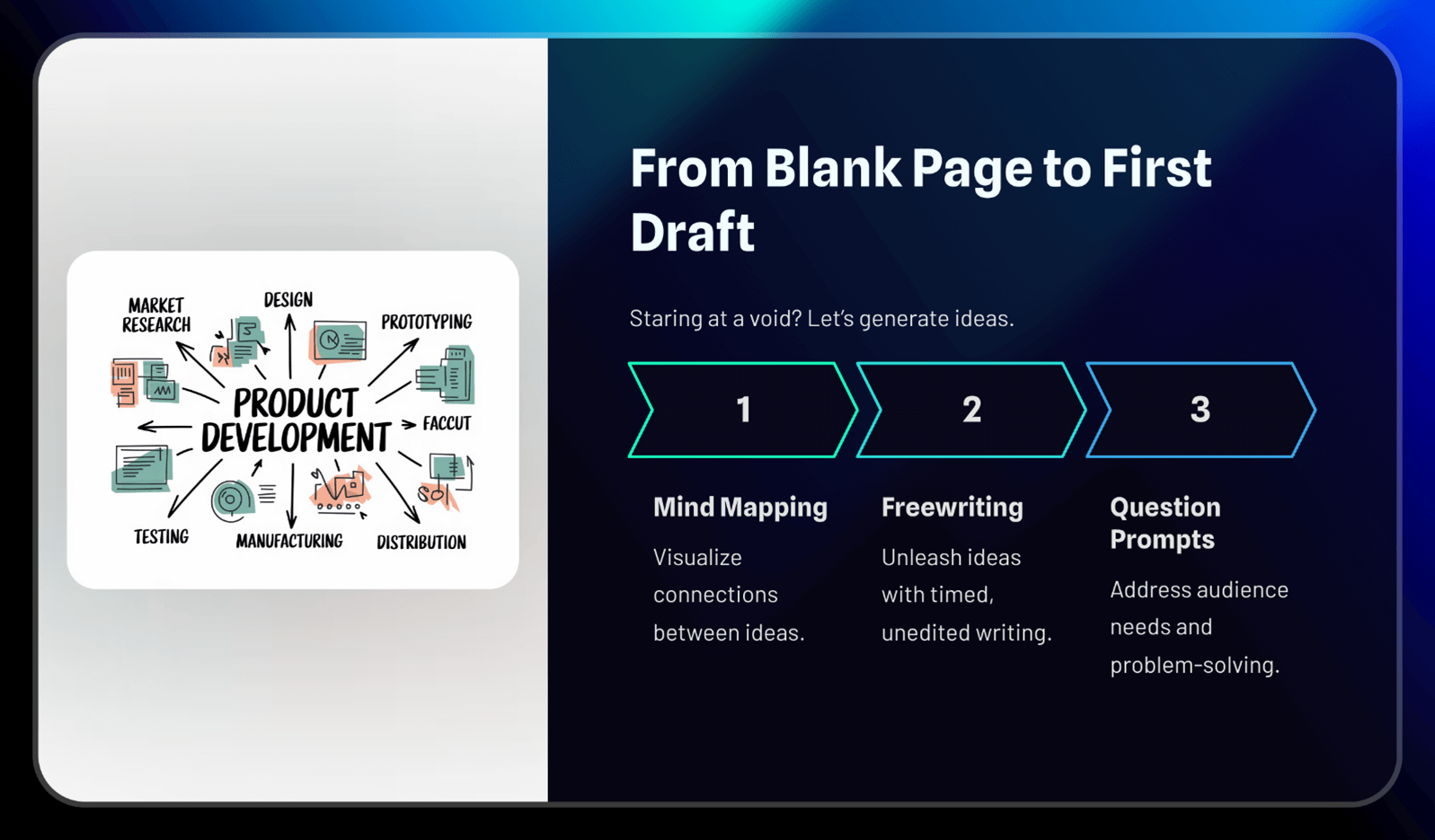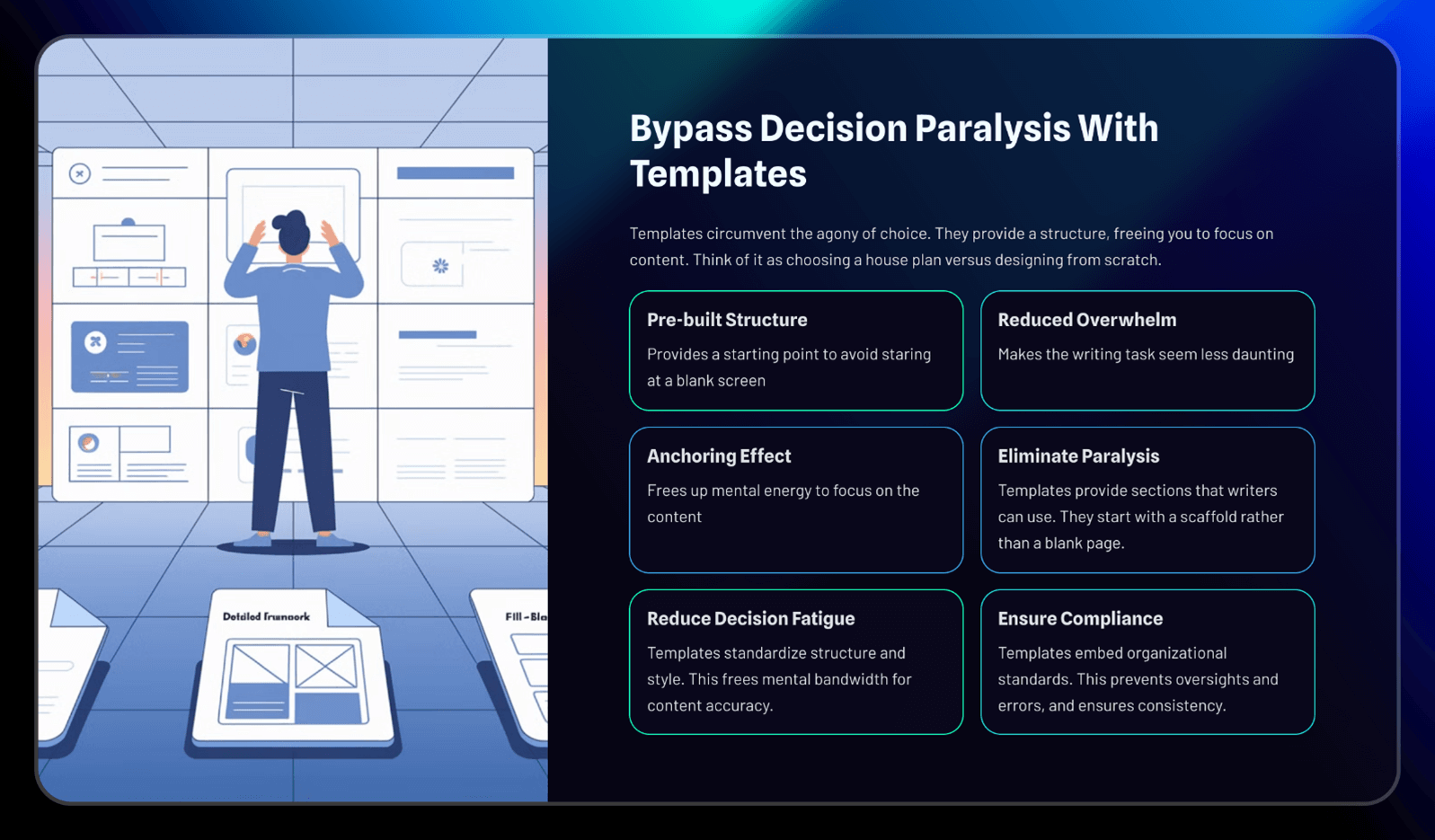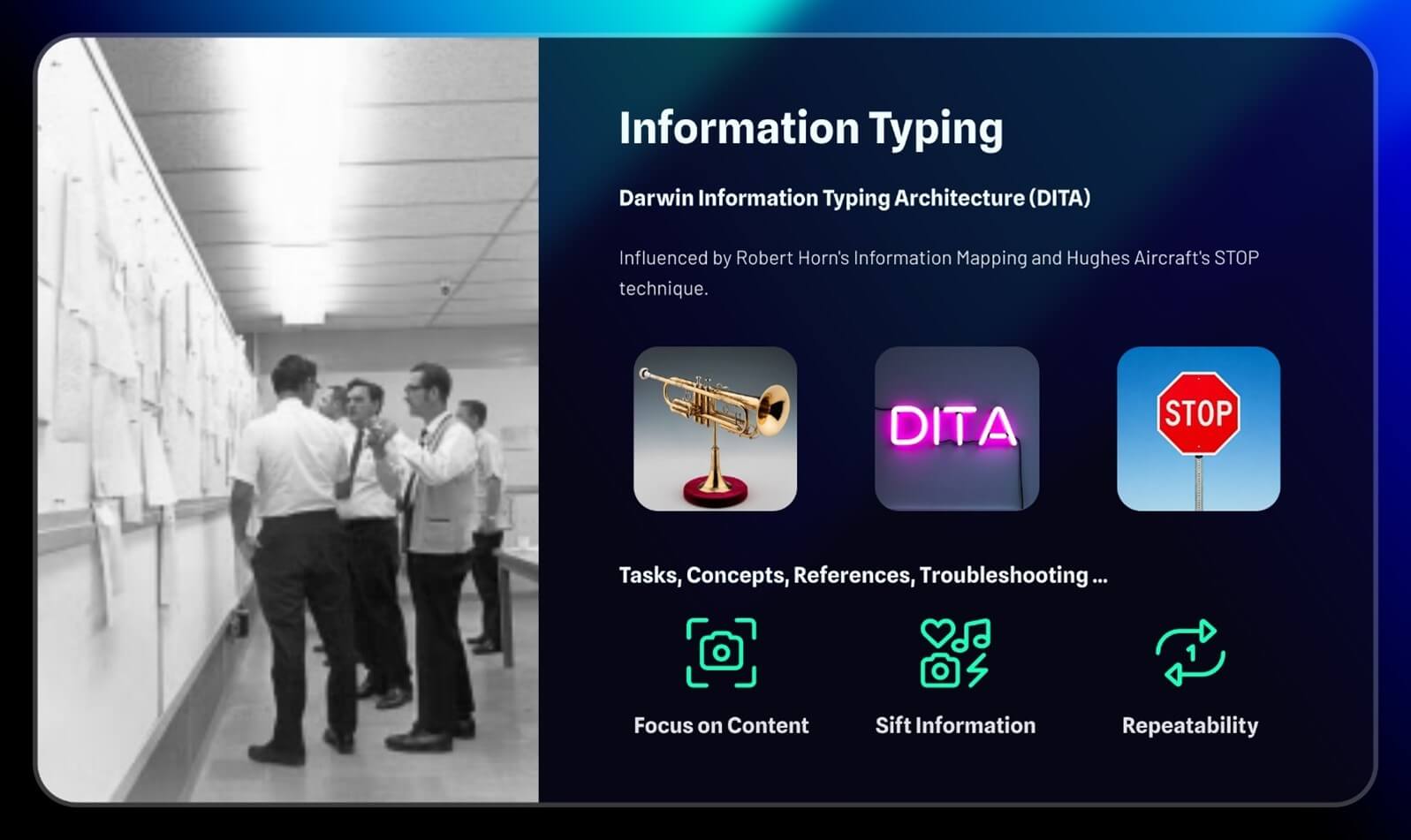Drawing a blank – overcoming writer’s block for technical communicators

Ever stared at a blinking cursor for way too long? At DITA Europe 2025, I tackled a topic that strikes fear into the heart of every writer: overcoming writer’s block, or what I affectionately call “Blank Page Syndrome.” Whether crafting your very first white paper or documenting complex fintech software, the blank page can feel like your toughest opponent.
This blog is a condensed version of that talk, originally published in the CIDM Best Practices newsletter. To read the full breakdown, with more insights, examples, and practical tools, click the link to the full article at the bottom of this blog.
Understanding writer’s block
Writer’s block isn’t exclusive to novelists; technical communicators face it regularly. In my experience, there are three primary culprits that fuel this phenomenon:
Perfectionism
The desire to produce flawless content from the outset creates paralyzing standards. We get bogged down by relentless self-editing during initial drafts, causing progress to stall.
Fear of failure
Known as Loss Aversion Bias, the pain of potential criticism outweighs the pleasure of completion. Anxiety about negative feedback can immobilize us entirely.
Information overload
Too much information makes it challenging to pinpoint exactly what your audience needs. Endless details and technical specifics can overwhelm us, leading to decision paralysis.
Additionally, technical writers often face unclear objectives, undefined audiences, and conflicting or incomplete requirements. Coupled with today's constant digital bombardment—emails, social media, notifications—it's no wonder productivity declines, and stress rises.
In the full article, I explore how these culprits often reinforce each other - and what to do when all three strike at once.
Effective strategies to 'break the block'
Over years of writing technical documentation, I've developed practical techniques to overcome writer's block.
The 5-Minute Rule
Commit to writing for just five minutes. Often, overcoming inertia is the hardest part. Once you start, momentum typically carries you forward.
Micro-steps (Chunking)
Divide tasks into smaller, manageable components. Instead of tackling a whole manual, start with a tiny section or a few bullet points. Breaking tasks down reduces cognitive load and fear, making writing more approachable.
Dedicated writing time
Schedule and protect specific writing periods as you would important meetings. Treating writing time as non-negotiable prevents procrastination and distractions.
Change your environment
A new setting, whether a café, a different office room, or even a quiet home corner can boost your productivity by refreshing your mental associations with writing tasks.
There are also some lesser-known psychological techniques I covered at DITA Europe that didn’t make it into this version – but they can be surprisingly effective. You can read about these in the full article, too.
Generating ideas and defeating the blank page

So, how do you break the inertia when your brain freezes at the sight of a blank page? To move from a daunting blank page to a productive draft, try:
Mind mapping
Use visual diagrams to brainstorm ideas. This approach highlights connections and sparks creativity in ways linear outlines often can't.
Freewriting
Write continuously for ten minutes without editing. The goal is to silence your inner critic temporarily and uncover useful ideas from the raw material generated.
Question prompts
Ask yourself targeted questions like, "What main problem am I solving for the reader?" or "What’s the most crucial information the audience needs first?" Answering these clarifies content priorities.
Embrace templates and structured content
Leveraging templates reduces decision paralysis. Just as an architectural blueprint guides construction, document templates provide structure and clarity, helping you bypass initial indecision.

Structured frameworks like DITA further streamline this process by categorizing content into logical chunks. When you’re stuck, knowing whether you’re writing a Task, Concept, or Reference gives you a starting point—and removes the pressure of writing “everything all at once.
Here are a few reasons why structured content is great for writer’s block:
- Each type has a defined role, ensuring topics remain focused and clear.
- Procedural details and conceptual explanations are separated, enhancing readability and usability.
- Modular content improves reuse, consistency, and ease of updates.
I've witnessed documentation significantly improve when topics are correctly structured, clearer content emerges naturally from thoughtful organization.
Skip the intro, use bullets, or leverage AI

If the introduction stalls you, skip it! Start writing sections where you're most comfortable, like detailed procedures or FAQs. Using bullet lists initially can quickly build a roadmap for the entire document.
Consider using AI writing assistants, if permissible. While not a substitute for your expertise, AI can spark ideas or suggest new ways to frame content, breaking through initial hesitation.
Collaboration and fresh perspectives
Not every solution has to come from within. Sometimes, the best way to beat writer’s block is to get out of your own head. You don't need to fight writer's block alone:
Peer collaboration
Share your drafts or discuss your ideas with colleagues. Fresh eyes often reveal overlooked angles and solutions.
Subject Matter Experts (SMEs)
SMEs can quickly clarify uncertainties, saving you from endless guesswork.
Community support
Engage with groups like CIDM or local tech writing forums. Community engagement offers emotional support and practical advice from peers who've faced similar challenges.
Speaking your content aloud, even to yourself, can also provide remarkable clarity, uncovering gaps or confusing elements that need addressing.
From blank to brilliant
Experiencing writer’s block doesn't mean you're a poor writer; it's simply a sign you might need to shift your strategy. Whether by adopting chunking, structured content, or leveraging cognitive biases, the goal is to replace paralysis with momentum.
Remember these essentials to combat blank pages:
- Break down tasks.
- Write anything, even imperfectly.
- Lean on your team and available templates.
- Clarify your content by talking through it.
- Celebrate small wins regularly.
These strategies are just part of the toolkit I presented at DITA Europe. For a deeper dive - complete with more practical templates, cognitive biases, and long-term habits for sustained productivity – check out the full article via CIDM (membership required).
Additionally, explore tools like RWS Tridion Docs, designed to support structured content and significantly ease the writing process.
Happy writing!
This blog post is an excerpt from an original article published in the CIDM Best Practices newsletter.
CIDM is an organization dedicated to helping advance the profession of information development worldwide. Through CIDM, information professionals can communicate with each other regularly and learn about each other’s successes, problems, and innovations.
